Shanghai Travel Guide
Shanghai Municipality | Population: 24,300,000
Shanghai Municipality
Shanghai Municipality | Population: 24,300,000
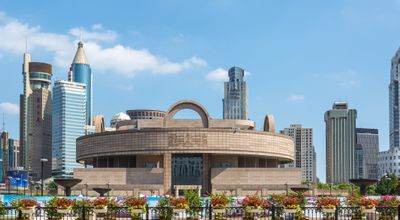
Museums are always filled with interesting facts and enriched with cultural items of a particular time or place that fa…
View Details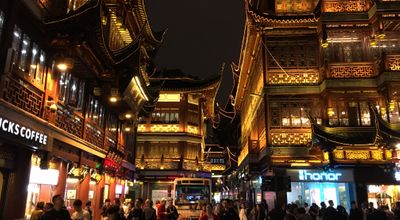
The Shanghai Chenghuang Miao, also known as City God Temple is situated at Middle Fangbang Road in Shanghai. The temple…
View Details
This tall tower’s entire structure is neatly made and rests on three huge columns that start on lush green grassland an…
View Details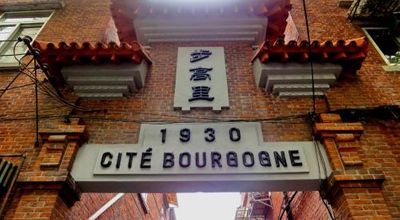
A living and breathing chunk of the 1930’s, the Cite Bourgogne (meaning Burgundy City in French) was built at that time…
View Details
Hailed as an outstanding structure by IABSE when it was built in 2003, the Lupu Arch Bridge was then the longest steel …
View Details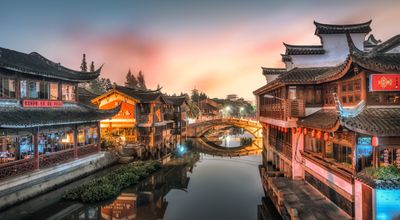
It is one thing to learn about history through books and museums and another entirely to experience it preserved in the…
View Details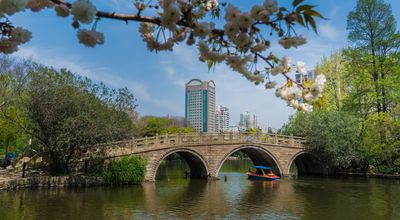
With a foundation laid in 1896 for a shooting range, before being redesigned as a park by the British, the Hongkou Park…
View Details
Wujiang Lu is the most prominent food street in Shanghai city. The street has everyone talking positively about the loc…
View Details
At the intersection of Yan'an Road and Xizang Road is located the famous Yunnan Nan Lu food street. It is one of the be…
View Details
Zhou's Miniature Carving House (Qibao) is located in Qibao- old town in Shanghai southwest. The house hosts a large num…
View Details
Songjiang Square Tower is a Buddhist pagoda in Singjian, an old suburb town of Shanghai. The tower was initially constr…
View Details
Madame Tussauds Shanghai can be found on the tenth floor of New World Plaza at Nanjing Xi Road in Shanghai and it is a …
View Details
This is the first soccer stadium ever built in China. It is found in the Hongkou District, Shanghai China. This is a st…
View Details
This is a Catholic cathedral which is situated at Xujiahui in Shanghai China. From 1960, this church has always been Sh…
View Details
Changfeng Ocean World is a leading ocean theme park in China and it is located at Putuo District in Shanghai. Its major…
View Details
It is abbreviated as SHOAC and it is located at the Century Avenue in Shanghai China. It was constructed jointly by Pud…
View Details
Part of the Sheshan National Tourism Park in Songjiang district of Shanghai, the Sheshan Observatory was among the firs…
View Details
There are many natural reserves spread over Shanghai to allow citizens to re-establish their connection with mother ear…
View Details
Shanghai is a shopaholics paradise and it should come as no surprise that there is a market devout solely to catering t…
View Details
This town is new in Songjiang District, around 30 km from central Shanghai. It was named after the famous Thames River …
View Details
Established in the year 2007 by Florence Samson, a Frenchwoman who has lived in China for over 10 years, this is a must…
View Details
Dongtai Road Antique Market is located in Luwan District, Shanghai Suburb. It is a renovated shopping center for antiqu…
View Details
The newly popularized Shengsi Island is actually an archipelago that encompasses over 400 islands, mostly small in size…
View Details
Transforming an area that had once bore the brunt of industrialization, the Xuhui Riverside Public Open Space converts …
View Details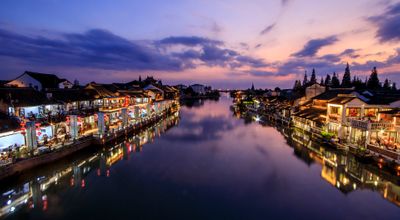
Located on the outskirts of Shanghai, Zhujiajiao is one of the water towns that is still well-maintained compared to ma…
View Details
The Zhenru Temple (meaning ‘reality as it is’) dates back to the ancient times of China, somewhere in the year 1320 dur…
View Details
Of the many ancient gardens in China, Yuyuan (literally Yu Garden) is perhaps one that is amongst the best-known ones. …
View Details
Opening its doors to speed junkies and motorheads in 2004, the Shanghai’s International Circuit race track is built to …
View Details
It is also known as Soochow creek or Wusong River which passes through Shanghai city. It is 125 km long where 54 km are…
View Details
Dominating the skyline in Pudong New District, sandwiched between two other sky-high skyscrapers, the Jin Mao Tower is …
View Details
When a place manages to score 1st position in world rankings, you gotta spare some time to check it out. So it is with …
View Details
Xintiandi square is located in the heart of Shanghai. The most economical way to get there is through the dedicated Xin…
View Details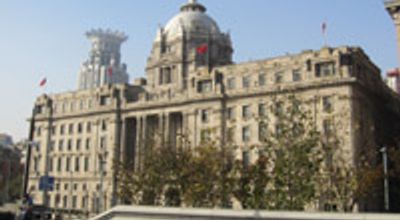
The famous waterfront promenade in Shanghai, known as The Bund, is a must-see place for visitors. From here, just acros…
View Details
Went to Shanghai and never paid a visit to the Jade Buddha Temple? Well, you are missing out on a good experience. And …
View Details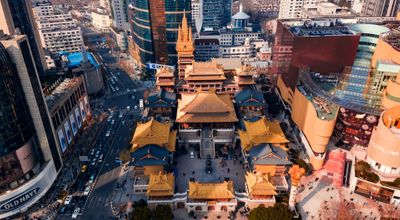
Like an oasis in a desert, the Jing’an (meaning ‘Peace and Tranquility’) Temple is a quite sanctuary in the midst of bu…
View Details
The tourist destination of Tianzifang is part of the greater French Concessions area and holds much the same characteri…
View Details
Huaihai Lu (Huaihai Road) is a busy street in Shanghai with many contemporary buildings and fashion spots. It is situat…
View Details
The Memorial Hall of Zhang Chongren was built at Puxi Square in his hometown of Qibao, Shanghai in 2003, to commemorate…
View Details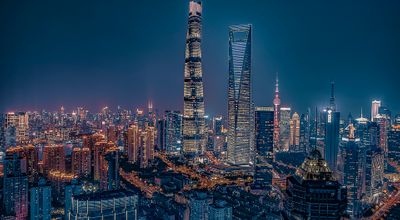
When built in 2008, the Shanghai World Finance Center was the tallest building in the metropolis, the 4th largest in Ch…
View Details
The Shanghai Old City was the seat of power of ancient Shanghai and had a wall built around for defense. However, the w…
View Details
Shanghai Arts and Crafts Museum, popularly known as the Little White House of Shanghai, is situated at Fenyang Lu, near…
View Details
SMP Skate Park is situated at 2100 Songhu Lu, near Guohao Lu in Shanghai. It is the first skatepark in Shanghai and one…
View Details
Dino beach is one of Shanghai’s summer destinations as it is her only water park. The beach has one of the largest wave…
View Details
Shanghai Museum of Contemporary Art (MOCA) is situated at People's Park on Nanjing Road in Shanghai. It is surrounded b…
View Details
Situated at the Thumb Plaza in Pudong New Area in Shanghai, Zendai Museum of Modern Art (Zendai MOMA) is an amazing pla…
View Details
The Shanghai Propaganda Poster Art Center (PPAC) is a window in to the history of a nation that has risen to super-powe…
View Details
During 1849 an area of almost 160 acres was conceded to the French for building a settlement on Chinese land, quite lik…
View Details
The market occurs every Friday at the junction of Aomen Lu and Changde Lu. It’s a great day to enjoy culture, food, and…
View Details
Jinshan Beach is a charming beach on Xincheng Road in the Jinshan District of Shanghai. It is a National AAAA Scenery A…
View Details
The second but largest one in China and the sixth one in the whole wide world, Disneyland Shanghai opened its gate to t…
View Details
Shanghai Huxi Mosque construction was completed in April 2000. It is the famous mosques in the city and the first to b…
View Details
The Shanghai Jewish Refugees Museum, located on Changyang Road, Hongkou in Shanghai, is dedicated to Jewish refugees th…
View Details
Jinxian Lu is a captivating street in Shanghai situated very close to the Huangpi Nan Lu Subway station. It is about te…
View Details
Dagu Lu is a renowned street situated around People's Square in Shanghai noted for legendary massage parlors. If you ne…
View Details
Shanghai Library is situated at Huaihai Zhong Lu in Xuhui District of Shanghai. It is the second biggest library in Chi…
View Details
Shanghai International Convention Center forms a modern city horizon with Oriental Pearl TV Tower as well as Shanghai W…
View Details
One of the dominant structures in Hongkou district of Shanghai is the 1933 Old Slaughterhouse or the ‘Old Millfun’. As …
View Details
With many a shopping malls and commercial avenues in this very busy part of Shanghai, the Guangqi park is an oasis of p…
View Details
Fuxing park has been grassy retreat since the Ming dynasty with many changes of ownership till it once again landed in …
View Details
The Shanghai Wild Insect Kingdom is located on Fenghe Road in the Pudong District of Shanghai, adjacent to the Oriental…
View Details
If you want to get the freshest seafood in Shanghai, the 24-hour Tongchuan Lu Seafood Market is an ideal place to visit…
View Details
This is a great place for people who want some fun and adrenaline. This is one of the most entertaining locations in Sh…
View Details
Tucked away behind the super tall and super famous Pearl Tower and Jinmao Tower, the Shanghai Ocean Aquarium is a utopi…
View Details
The Shanghai Exhibition Centre was built in 1955 as the Sino-Soviet Friendship Building. It is an exhibition and conven…
View Details
The Shanghai Expo 2020 was a grand event on an international scale that had countries from all over the world setting u…
View Details
Nanjing Lu Fake Market is a great place for fake goods. Shanghai has other places with fake goods as well but this plac…
View Details
It is an all-steel bridge which is the first one and only camel truss bridge that is surviving in China and is popularl…
View Details
The area that is covered by Shanghai circus world is 22,500 square meters and it is an indoor circus which is found in …
View Details
Although less known than the "Fabric Market", Shi Liu Pu Cloth Market has an excellent selection of tailors ready to se…
View Details
It takes one 10 minutes to walk to this place from West Nanjing road. There is free parking for all those who come here…
View Details
The Grand Gateway Shopping Mall is a trading venue that tries to focus on the Western style of trading and it has prove…
View Details
Located in the Huangpu district, towards the south of The Bund at the heart of Shanghai, the cool docks are a recent de…
View Details
People's Square in Shanghai is situated at the center of the city with Nanjing Road to its north, Yan'an Gaojia Road to…
View Details
Those new to Shanghai, feel like the city will swallow them whole with the vast variety of activities and the plethora …
View Details
The Peace Cinema began its operations in 2004 and remains one of the most popular cinemas in Shanghai to date. This is …
View Details
Qipu Lu Fashion & Accessories Market was the biggest clothing market in a town in the late '90s. The whole family spend…
View Details
Shanghai Modern Military Sports Club is situated at 701 Huaihai Zhong Lu, near Sinan Lu in Xuhui District of Shanghai. …
View Details
Longhua Cemetery of Revolutionary Martyrs is situated at 2887 Longhua Xi Lu in Shanghai. It was used as a prison and ex…
View Details
The Rockbund Art Museum is a museum of contemporary art and plays a major role in the art scene all over the world. It …
View Details
A little under tourists’ radar for the time being, the Hongqiao International Pearl Market is a shopping complex in the…
View Details
Sitting on an area of almost 90 acres, the Changfeng Park is an illustrious natural space with classical Chinese garden…
View Details
It is situated along Hengshan road, on the south-east of Shanghai. The whole building is around 16 meters high and it’s…
View Details
This place is home to hundreds of tailors. In Fabric Market, you can hire clothes related jobs. If you want to replicat…
View Details
An imposing building at the summit of Sheshan Hill, the Basilica of Our Lady of Sheshan dates back to the year 1873. Th…
View Details
The Shanghai Postal Museum is perched on the north bank of the Suzhou river and is a magnificent sight to behold with i…
View Details
Shaoxing Lu is a marvelous street in Shanghai with lots of tourist attractions. More than six former publishing houses …
View Details
Zhou Enlai was China's premier between 1949 and 1976 when he died. His former residence at Sinan Road, Old French Conce…
View Details
Designed by a Japanese architecture firm which won out of all the international bidders invited, the Qizhong Forest Spo…
View Details
No visit to Shanghai is complete without a peek at the various temples and pagodas that are deeply ingrained part of lo…
View Details
Shanghai Botanical Garden boasts of great collections of plants to be the largest metropolitan botanical garden in Chin…
View Details
What was once an industrial district has now been converted to a trendy creativity enclave for the artistically incline…
View Details
It will not be an exaggeration if you say that the Pearl & Jewelry Market in Shanghai is the perfect place to buy pearl…
View Details
As Shanghai is a coastal city, there are bound to be many islands in its proximity. However, none as are as unique as t…
View Details
For the local Chinese as well as tourists, the best place to find any kind of photography-related items, the Xing Guan …
View Details
The 2010 World Expo had reportedly cost $40 billion and had been visited by nearly 73 million people at the time. The c…
View Details
Spread across three stories of a building, the Caojiadu is the largest flower and bird market in Shanghai. Flowers that…
View Details
Shikumen homes (meaning ‘Stone Gate House’) were the trending style of construction in early 19 century middle class ho…
View Details
Originally called the City God Temple, the Yuyuan Bazaar or Yuyuan Market was built in the 15th century. As the number …
View Details
A big city like Shanghai has something for everybody. This is more then true for shopaholics! With a multitude of malls…
View Details
Although not the largest theater in the city (that title goes to Shanghai Grand Theater), the Shanghai Culture Square t…
View Details
Built in the 9th century, the Mao Pagoda Lighthouse is a 30-meters tall iconic structure on Sun Island, Shanghai. Altho…
View Details
With almost 60kms between downtown Shanghai and Sun Island, this area is well out of the smog zone and is perfect for a…
View Details
Established in 2012, the Power Station of Art is a power station turned 20th century art museum which is managed direct…
View Details
Acclaimed as one of the largest museums in Asia, the China Art Museum is dedicated to curating the progress of classic …
View Details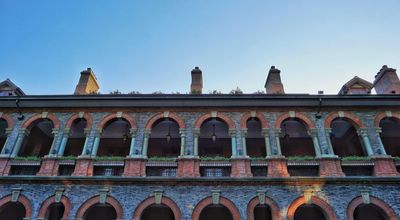
Reminiscent of the times when the French ruled part of Shanghai, the Sinan Mansions is a quaint quarter of the greater …
View Details
Tourists going to Minhang district, are usually particularly looking forward to experiencing China as it was in imperia…
View Details
The third largest in China, Chongming Island has been around for over 13 centuries and the years have seen its land are…
View Details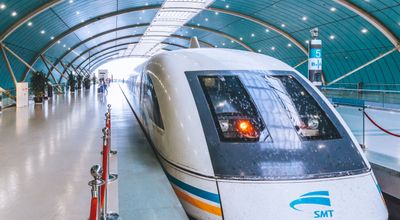
The Shanghai Maglev Train was built in 2002, recognized as the ‘Fastest Commercial Train in the World’ in the Guinness …
View Details
Zhongshan Park is located in Changning district. Previously, it was a private park owned by a British developer but it …
View Details
Gongqing Forest Park is considered the second largest in Shanghai, right after central Century Park. The area dedicated…
View Details
The Art Labor Gallery is situated at 570 Yongjia Lu, very close to Yueyang Lu, five minutes walk from Hengshan Road in …
View Details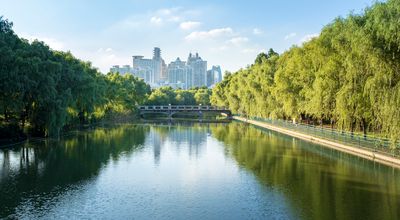
Located close to the heart of busy Shanghai, the Century Park is not just a simple green space for a quite stroll. It i…
View Details
Considered an artist’s delight, the Fengjing Ancient Town is like the “Venice” of China. Situated in Shanghai, the anci…
View Details
Built in 1934, the Russian Orthodox Mission Cathedral in Shanghai is a symbol of the classic Kremlin-like architecture …
View Details
Being a popular place for beach parties in the summer season between May and September, the Rico Rico Beach in Shanghai…
View Details
If you are searching in Shanghai for retail outlets selling affordable clothing and accessories for newborns to 8-year-…
View Details
Situated on Guangzhong road, Daning Lingshi Park is one of the most excellent places to be in Shanghai. It occupies abo…
View Details
Yinqixing Indoor Ski Center is a leading tourist center in Shanghai situated at number 1835, Qixing Lu, very close to G…
View Details
If you want to exploit the secret of science, Shanghai Science and Technology Museum is the right place to be. Situated…
View Details
A distinguished AAAA rated site by the National Tourism Administration of China, the Sheshan National Tourism Park is l…
View Details
Looking like a glass palace, the Shanghai Grand Theater is an enormous structure that was opened in 1998 and has one of…
View Details
Duolun Museum of Modern Art, Duolun MOMA, is the first contemporary art museum in China situated at Hongkou district in…
View DetailsShanghai has one of the world's most developed Metro systems, consisting of 15 different lines and still growing rapidly. Fares start at just 3 RMB, maxing out at 7 RMB if you're taking a much longer journey. You can buy single use tickets at every single station from the machine using coins, while some machines also accept notes. All machines have an option to switch to English. Alternatively you can buy a rechargeable metro card from the counter at each station. The deposit for the card itself is 20 RMB and be returned when you leave to get your money back. Be aware that during peak hours in the morning and evening the trains gets extremely crowded, so try to avoid travelling at peak times if you don't like crowds. Information on all signs and maps is in both English and Chinese, but don't expect that many of the staff will be able to speak English.
Unfortunately, busses in Shanghai are not a particularly tourist-friendly mode of transport, as none of the timetables are in English. Recently though English has been added to the on-board announcements, so if you know where you are going you should be fine. The other confusing thing can be the pricing as it varies depending on the route, however most busses are a flat fee of 2 RMB. Deposit coins in the chute as you enter the bus (there's no ticket), or swipe your metrocard when boarding.
Shanghai is home to one of the fastest trains in the world, known as the Maglev. This magnetically levitating training will whisk you from Pudong International Airport to Longyang Rd in just 8 mins at 430km/h for 50 RMB. The only problem is the Longyang Road is basically in the middle of nowhere. It does however have 3 metro lines to change to (Line 2, Line 7 & Line 16), so there are some options when you get off. The train leaves every 15 minutes.
Hailing a taxi is generally fairly easy during the day, but becomes very difficult during peak hours or in certain areas. Make sure you have your destination written down in Chinese, as driver's can't speak or read English. Credit cards are not accepted, so as a tourist your best option is cash. At the end of your journey the machine in the front will print out an invoice, and it's advisable to hang on to this. Generally speaking, there's no haggling on prices, and the price is calculated on distance plus a base cost. At night, the cost increases by approximately 25%.
The main rail hub for high-speed trains in Shanghai, Hongqiao Railway Station is located on the city's west side, right next to Hongqiao International Airport. It is services by Metro Lines 2, 7 and 17, and services high-speed trains only. It can get extremely busy at certain times of the year, but is normally very easy to navigate. From the city center, a day will probably cost you around 70 RMB during the day, or 100 RMB at night.
Located to the South West of the city, this station serves both high and low speed trains, particularly those heading towards the south of the country. It's connected with Metro Lines 1 and 3, and the under-construction Line 15.
Located reasonably centrally just 2km north-west of People's Square, Shanghai Railway Station serves both low and high-speed trains, as well as trains to Hong Kong. Despite it's name, it's no longer the main station in Shanghai having been replaced by Hongqiao. Nevertheless it can sometimes be a more convenient option for those looking to travel by high-speed train to Suzhou, Wuxi and Nanjing, due to the more central location. It's also well connected, being served by Metro Lines 1, 3 and 4.
Shanghai Pudong International Airport is the 2nd busiest airport in China, handling most of the international traffic for Shanghai. Accordingly, it has only a few domestic routes. It links to Shanghai Hongqiao International through Metro Line 2 (RMB8) and the high-speed Maglev Train (RMB50), though a transfer to Metro Line 2 is required at Longyang station. Airport shuttles, taxis, metro and public buses are all valid options for downtown taking 45 minutes to 1.5 hours.
Despite the name, Hongqiao International Airport caters mainly for domestic flights, as well as flights to Hong Kong, Macau and Taiwan. There are a limited amount of flights to mainly South-east Asian countries as well. The airport consists of two terminals which are completely separate to each other. The bigger terminal is Terminal 2, and it is located on the west side of the tarmac, right next to Hongqiao Railway Station. It is serviced by Metro Lines 2 and 10. Terminal 1 is located on the east side of the tarmac, and mainly serves budget airline Spring Airlines. It is serviced only by Metro Line 10. From the city center, a taxi to the airport will cost around 70 RMB during the day, or 100 RMB at night.
See the table below for an overview of Shanghai's weather:
| Jan | Feb | Mar | Apr | May | Jun | Jul | Aug | Sep | Oct | Nov | Dec | |
|---|---|---|---|---|---|---|---|---|---|---|---|---|
| Average High (C) | 7.0 | 10.0 | 13.8 | 19.5 | 24.8 | 27.8 | 32.2 | 31.5 | 27.9 | 22.9 | 17.3 | 11.0 |
| Average Low (C) | 2.1 | 6.9 | 6.9 | 11.9 | 17.3 | 21.7 | 25.8 | 25.8 | 22.4 | 16.8 | 10.6 | 5.0 |
| Rain (mm) | 74 | 59 | 94 | 74 | 84 | 182 | 146 | 214 | 87 | 56 | 52 | 44 |
| Rain (days) | 10 | 9 | 12 | 11 | 10 | 13 | 11 | 12 | 9 | 7 | 8 | 8 |
| Humidity (%) | 74% | 73% | 73% | 72% | 72% | 79% | 77% | 78% | 75% | 72% | 72% | 71% |